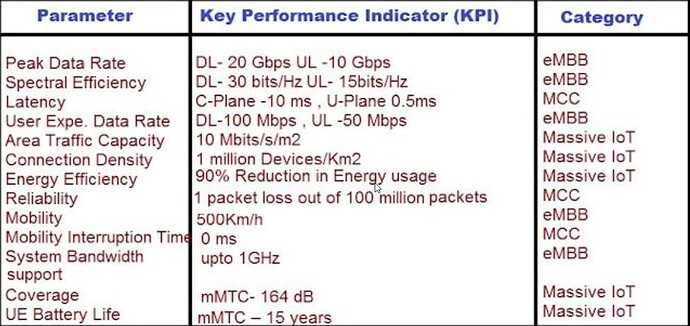Key Performance Indicator (KPI), is a measurable value that helps organizations assess their progress toward achieving specific goals or objectives KPIs are used to evaluate and measure various aspects of the network’s performance and efficiency.
Here are some common 5G KPIs and how to improve them:
-
Latency: Latency is the delay in data transmission between a device and the network. Low latency is a critical aspect of 5G, especially for applications like real-time gaming, augmented reality, and autonomous vehicles.
To improve latency KPIs:
-
Invest in edge computing infrastructure to process data closer to the source.
-
Optimize network architecture to reduce round-trip times.
-
Prioritize traffic based on latency requirements.
-
-
Throughput: Throughput measures the amount of data that can be transmitted over the network in a given time period.
To improve throughput KPIs:
-
Deploy more small cell sites to increase network capacity.
-
Implement advanced antenna technologies like MIMO (Multiple Input, Multiple Output).
-
Use higher frequency bands to achieve greater bandwidth.
-
-
Coverage: Coverage measures the geographical area where 5G signals are available.
To improve coverage KPIs:
-
Build more cell towers and small cell sites to extend the network’s reach.
-
Utilize beamforming techniques to focus signals where they are needed.
-
Optimize network planning and design to minimize coverage gaps.
-
-
Reliability: Reliability KPIs assess the network’s ability to maintain consistent and stable connections.
To improve reliability KPIs:
Implement redundancy in network components to minimize outages.
Monitor network performance in real-time and proactively address issues.
Conduct regular maintenance and software updates.
-
Energy Efficiency: Energy efficiency is becoming increasingly important as 5G networks expand.
To improve energy efficiency KPIs:
-
Use energy-efficient hardware and infrastructure.
-
Optimize network resource allocation to reduce energy consumption during low-demand periods.
-
Employ sleep mode or power-saving features for network components when traffic is light.
-
-
Security: Security is a critical aspect of 5G, and security-related KPIs assess the network’s ability to protect data and prevent unauthorized access.
To improve security KPIs:
-
Implement robust encryption protocols.
-
Continuously monitor and update security measures to address emerging threats.
-
Educate users and network operators about security best practices.
-
-
Spectral Efficiency: Spectral efficiency measures how effectively the available radio spectrum is utilized to transmit data.
To improve spectral efficiency KPIs:
-
Implement advanced modulation schemes.
-
Use dynamic spectrum allocation techniques to allocate frequencies efficiently.
-
Optimize interference management and coordination.
-
LinkedIn: ![]()
